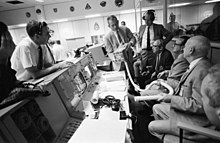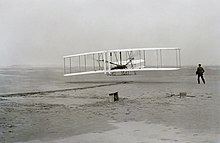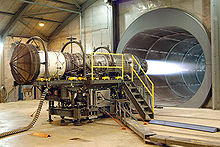Aerospace engineering
| ||||||||||||||||||||||||||||||||||
Read other articles:

One of the National Seals of Japan Imperial Seal of JapanArmigerNaruhito, Emperor of JapanAdopted1183; 841 years ago (1183)Order(s)Order of the Chrysanthemum The Imperial Seal of Japan or National Seal of Japan, also called the Chrysanthemum Seal (菊紋, kikumon), Chrysanthemum Flower Seal (菊花紋, 菊花紋章, kikukamon, kikukamonshō) or Imperial chrysanthemum emblem (菊の御紋, kikunogomon), is the mon used by the Emperor of Japan and members of the Imperial Family. …

Шалфей обыкновенный Научная классификация Домен:ЭукариотыЦарство:РастенияКлада:Цветковые растенияКлада:ЭвдикотыКлада:СуперастеридыКлада:АстеридыКлада:ЛамиидыПорядок:ЯсноткоцветныеСемейство:ЯснотковыеРод:ШалфейВид:Шалфей обыкновенный Международное научное назва…

2008 Spanish filmThe AviatorsDirected byMiquel PujolWritten byMiquel Pujol (script)Ibán Roca (script)Produced byHilari PujolBeñat BeitiaCinematographyDonato FierroEdited byXavier CabreraMusic byManel GilProductioncompaniesAccio StudiosRTVE[1]Distributed byConcept Producciones[2]Release dates 26 September 2008 (2008-09-26) (San Sebastián International Film Festival) 19 June 2009 (2009-06-19) (Spain) Running time85 minutes[3]CountryS…

1917 Last Russian offensive of WW1 Kerensky offensivePart of the Eastern Front of World War IThe Kerensky offensive and its aftermath.Date1–19 July 1917LocationGalicia, Central EuropeResult Central Powers victoryBelligerents Russia Germany Austria-Hungary Ottoman EmpireCommanders and leaders Aleksei Brusilov Aleksei Gutor Lavr Kornilov Leopold of Bavaria Eduard von Böhm-Ermolli Felix Graf von BothmerUnits involved Southwestern Front 11th Army 7th Army 8th Army // Army Group B�…

Voce principale: Unione Sportiva Triestina Calcio. Unione Sportiva TriestinaStagione 1941-1942 Sport calcio Squadra Triestina Allenatore Mario Villini Presidente Eolo Rossi Serie A8º posto Coppa ItaliaSedicesimi di finale Maggiori presenzeCampionato: Tagliasacchi (30)Totale: Tagliasacchi (31) Miglior marcatoreCampionato: Tagliasacchi (7)Totale: Tagliasacchi (8) 1940-1941 1942-1943 Si invita a seguire il modello di voce Questa voce raccoglie le informazioni riguardanti l'Unione Sportiva Tri…

Ancient Egyptian priest, scribe, and public official For other uses, see Amenhotep. AmenhotepSculpture of Amenhotep, son of HapuBornc. 1425 BCAthribis, Lower EgyptDiedc. 1356 BC (aged c. 69)Thebes?, EgyptOccupationPolymath Amenhotep, son of Hapu (transcribed jmn-ḥtp zꜣ ḥꜣp.w;[dubious – discuss] fl. early-mid 14th century BC) was an ancient Egyptian architect, a priest, a herald, a scribe, and a public official, who held a number of offices under Amenhotep III of the 18…

Topis in Akagera National Park The wildlife of Rwanda comprising its flora and fauna, in prehistoric times, consisted of montane forest in one third the territory of present-day Rwanda. However, natural vegetation is now mostly restricted to the three national parks and four small forest reserves, with terraced agriculture dominating the rest of the country.[1][2] Geography Rwanda is a landlocked country in Central Africa, bordered by Burundi, Democratic Republic of the Congo, Ta…

Yahoo! Viewsito webLogo URLview.yahoo.com Tipo di sitoVideo on demand RegistrazioneOpzionale CommercialeSì ProprietarioYahoo! Lancio1º giugno 2006 Stato attualeChiuso Modifica dati su Wikidata · Manuale Yahoo! View è stato un sito web di video on demand lanciato da Yahoo! il 1º giugno 2006 e chiuso il 30 giugno 2019.[1] In collaborazione con Hulu, trasmetteva gli episodi di serie televisive delle reti ABC, NBC e Fox negli Stati Uniti, nonché una moderata selezione di programmi…

Istituto LUCELogo Stato Italia Forma societariaSocietà per azioni Fondazione1924[1] a Roma Fondata daBenito Mussolini Chiusura2011 (confluita in Istituto Luce Cinecittà)[1] Sede principaleRoma Settorecinematografia Sito webcinecitta.com/ Modifica dati su Wikidata · Manuale L'Istituto LUCE (L'Unione Cinematografica Educativa) è stata una società per azioni italiana, creata nel 1924 durante il ventennio fascista[1]. Celebre per esser divenuta un poten…

Article connexe : Liste des contes d'Andersen. La Bergère et le Ramoneur. La Bergère et le Ramoneur (en danois : Hyrdinden og skorstensfejeren) est un conte de Hans Christian Andersen publié en 1845. Résumé Deux figurines de porcelaine (une bergère et un ramoneur) sont éprises l'une de l'autre ; mais un vieux Chinois, lui aussi de porcelaine, affirme être le grand-père de la bergère et veut marier celle-ci à un satyre surnommé le « sergent major général command…

هذه المقالة تحتاج للمزيد من الوصلات للمقالات الأخرى للمساعدة في ترابط مقالات الموسوعة. فضلًا ساعد في تحسين هذه المقالة بإضافة وصلات إلى المقالات المتعلقة بها الموجودة في النص الحالي. (أغسطس 2022) توسع الأوعية الدموية للقرنية (CNV) معلومات عامة الاختصاص طب العيون من أنواع الت…

Genus of legumes Chesneya Chesnaya rytidosperma Scientific classification Kingdom: Plantae Clade: Tracheophytes Clade: Angiosperms Clade: Eudicots Clade: Rosids Order: Fabales Family: Fabaceae Subfamily: Faboideae Tribe: Hedysareae Genus: ChesneyaLindl. ex Endl. (1840) Species 47; see text Synonyms[1] Chesniella Boriss. (1964) Kostyczewa Korsh. (1896 publ. 1897) Spongiocarpella Yakovlev & N.Ulziykh. (1987) Chesneya is a genus of flowering plants in the family Fabaceae.[2] It …

منى الشاذلي معلومات شخصية اسم الولادة منى محمد محمود أحمد الشاذلي الميلاد 23 سبتمبر 1973 (51 سنة) القاهرة مواطنة مصر الحياة العملية المدرسة الأم الجامعة الأمريكية بالقاهرة المهنة مقدمة تلفزيونية اللغة الأم العربية اللغات العربية سنوات النشاط 1996 - حتى �…

Cold War Mediterranean (Middle East, North African and European) member states of the Non-Aligned Movement. Malta was the third European member state of the Non-Aligned Movement (after charter members of Cyprus and SFR Yugoslavia) joining it in 1973.[1] The country remained a part of the movement until 2004 when one of the requirements of the 2004 enlargement of the European Union was for Malta to leave the Non-Aligned Movement. European integration process therefore affected and limited…

Citrus fruit and plant Ponderosa lemon Scientific classification Kingdom: Plantae (unranked): Angiosperms (unranked): Eudicots (unranked): Rosids Order: Sapindales Family: Rutaceae Genus: Citrus Species: C. × pyriformis Binomial name Citrus × pyriformis Citron varieties Acidic-pulp varieties Balady citron Diamante citron Greek citron Non-acidic varieties Corsican citron Moroccan citron Pulpless varieties Fingered citron Yemenite citron Citron hybrids Bizzarria Florentine citron Kabbad Lu…

Overview of capital punishment in Canada Capital punishment in Canada dates back to Canada's earliest history, including its period as a French colony and, after 1763, its time as a British colony. From 1867 to the elimination of the death penalty for murder on July 26, 1976, 1,481 people had been sentenced to death, and 710 had been executed. Of those executed, 697 were men and 13 women. The only method used in Canada for capital punishment of civilians after the end of the French regime was ha…

Gur language of Northern Ghana DagbaniDagbanliNative toGhana, TogoRegionKingdom of DagbonEthnicity5.6 million Dagbamba (2021 census)[1]Native speakers1.2 million (2013)[1]Language familyNiger–Congo? Atlantic–CongoVolta-CongoSavannasGurNorthernOti–VoltaWesternSoutheasternDagbaniDialects Nanuni (Nanumba) Tomosili Nayahali Writing systemLatin, Ajami (Arabic)Language codesISO 639-3dagGlottologdagb1246This article contains IPA phonetic symbols. Without proper rendering…

Location of Washington County in New York Map all coordinates using OpenStreetMap Download coordinates as: KML GPX (all coordinates) GPX (primary coordinates) GPX (secondary coordinates) List of the National Register of Historic Places listings in Washington County, New York This is intended to be a complete list of properties and districts listed on the National Register of Historic Places in Washington County, New York. The locations of National Register properties and districts (at least for …

Light boat that is paddled For other uses, see Canoe (disambiguation). Birch bark canoe, Ilnu Museum in Mashteuiatsh, Quebec, Canada[1] A B.N. Morris Canoe Company wood-and-canvas canoe built approximately 1912 Birch bark canoe at Abbe Museum in Bar Harbor, Maine Bark canoe in Australia, Howitt 1904 A family riding a canoe in the Western Region of Ghana A canoe is a lightweight narrow water vessel, typically pointed at both ends and open on top, propelled by one or more seated or kneelin…

هذه المقالة تحتاج للمزيد من الوصلات للمقالات الأخرى للمساعدة في ترابط مقالات الموسوعة. فضلًا ساعد في تحسين هذه المقالة بإضافة وصلات إلى المقالات المتعلقة بها الموجودة في النص الحالي. (مارس 2024) هذه المقالة عن فيلم عراقي. لتصفح عناوين مشابهة، انظر ذكريات (توضيح). ذكرياتمعلومات…






